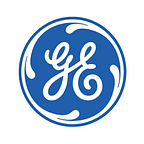Things That Go: Sometimes Invention Moves You
This story is part of a series from GE that explores Unexpected Inventions and the subtle geniuses who discover something new by seeing the world differently.
Sometimes motion itself is the mother of invention.
And when it is, serendipity doesn’t have to be much more than a clumsy arm, a wayward spring and gravity. Or it can be as simple as taking the wheels off of a freight train and using it as a power plant.
Hey, whatever moves you to invent.
Chugging locomotives inspire power plants
Freight trains carrying thousands of tons need a lot of power to move. A locomotive engine like GE’s PowerHaul P616, for instance, outputs 3,700 horsepower, greater than the peak power output of a blue whale.
The company’s engineers recently figured that type of power could also be taken off wheels to instead generate electricity in places that aren’t connected to a conventional electric grid. They converted the P616, a 130-ton four-stroke, turbocharged high-speed diesel engine, into a stationary generator that outputs 2.6 megawatts of electricity.
Five of the new power plants will be installed at an industrial flourmill in Kano, Nigeria, where they will supply 12.5 megawatts of power. “There is no gas infrastructure in Kano,” said GE’s Andreas Eberharter. “These engines will be their primary source of power.”
From whale flippers to airplane wings
Researchers have long been impressed by humpback whales, which can turn in tight circles though the creatures can be 50 feet long and weigh 4,000 tons. Scientists recently realized a specialized part of the animal’s anatomy unlocked this amazing maneuverability — rounded bumps called tubercles on the flipper’s leading edge improve how water flows over the limb.
It turns out that tubercles increase lift, decrease drag and increase the stall angle compared to straight edges. That insight is leading to a new engineering paradigm, which may soon see bumpy-edged aircraft wings and wind turbine blades like those on humpback flippers.
“The tubercles provide a bio-inspired design that has commercial viability for wing-like structures,” wrote biologist Frank Fish and colleagues in a 2011 paper. “Control of passive flow has the advantages of eliminating complex, costly, high-maintenance, and heavy control mechanisms, while improving performance for lifting bodies in air and water.”
Jet engines power ships on the high seas
Invention is in constant demand in the transportation sector, and those who look at successful products in new ways often win. Such is the case for those who looked up in the sky at powerful jet aircraft and saw a game-changing technology for ships.
In 1968, GE engineers built a high-bypass turbofan engine called the TF39 to propel the Air Force’s giant C-5 cargo plane. It went on to also power passenger jets, including Air Force One. Then, in 1969, GE engineers tweaked the engine, renamed the LM2500, for marine purposes and began operating aboard the U.S. Navy’s G.T.S. Admiral Callahan. It was the first of several applications for the original engine platform, which was also adapted for use as electrical power generation and compressor drives on oil- and gas- drilling platforms.
But the most thrilling application of the engine has been to propel what has been called the fastest ferry in the world. Two of the engines generate 59,000 horsepower aboard the Francisco, an automobile and passenger ferry that travels at 67 miles per hour on its regular run between Buenos Aires, Argentina and Montevideo, Uruguay.
“This is certainly the fastest ship in the world,” said Kim Clifford, the managing director of shipbuilder Incat. “Of course there’s a few speed boats that could surpass 58 knots, but nothing that could carry 1,000 passengers and 150 cars, and with an enormous duty-free shop on board.”
A steady ship, a marvelous spring
In 1943, a mechanical engineer named Richard James was working to keep equipment on Navy ships steady in rocking seas, using springs to stabilize sensitive instruments. One day, he accidentally knocked a spring from a shelf and watched as it gracefully stepped down instead of falling, and landed on the floor upright instead of coming to rest in a jumble on its side.
In a single moment of chance, James came up with one of the most popular toys of the last century. But to turn those ingredients into a toy adored by generations of children requires one more crucial addition — a perceptive inventor.
Thus was born the Slinky.
Feeling Inspired? Check out the GE Store, a marketplace of imagination that is reinventing industry by mixing and matching GE technology in unexpected ways.
